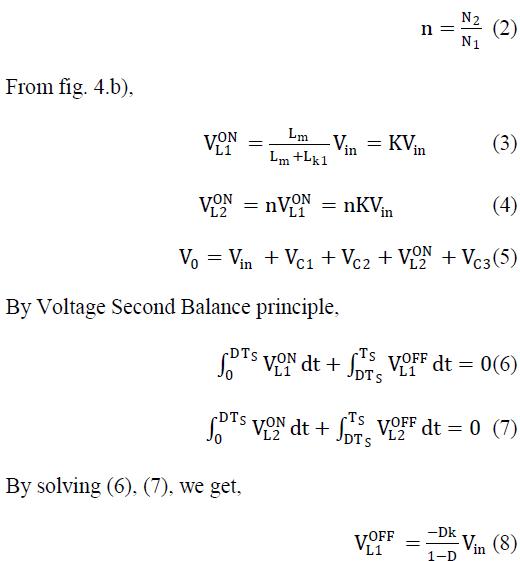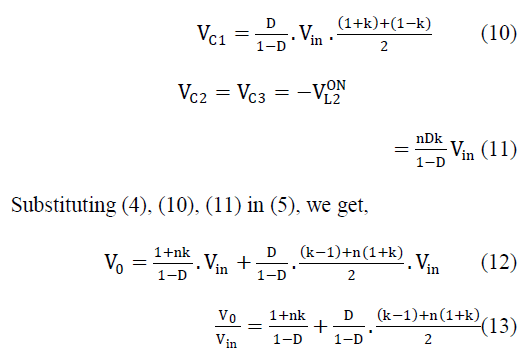ISSN ONLINE(2319-8753)PRINT(2347-6710)
ISSN ONLINE(2319-8753)PRINT(2347-6710)
| Ashok Rai1, Pradeep Mouria2, Vishal Gulati3, Puneet Katyal4 Assistant Professor, Dept. of Mechanical Engg., HCTM Technical Campus, Kaithal, Haryana, India1 Assistant Professor, Dept. of Mechanical Engg., PDM College of Engg. Bahadurgarh, Haryana, India2 Assistant Professor, Dept. of Mechanical Engg., G.J. University of Science & Tech., Hisar, Haryana, India3 Assistant Professor, Dept. of Mechanical Engg., G.J. University of Science & Tech., Hisar, Haryana, India4 |
| Related article at Pubmed, Scholar Google |
Visit for more related articles at International Journal of Innovative Research in Science, Engineering and Technology
Surface roughness is recognized as one of the most critical defects that can result from the machining of composites. Particularly, the life of the product is critically affected by the holes created by milling. Thus, in order to extend the applications of fiberglass, accurate milling is essential for removal of the excess material. This work is towards the determination of surface roughness related to milling process that decides the quality of holes. This study predicts the effects of machining parameters like mill tool diameter, feed rate, depth of cut and cutting speed on the quality of the milled holes in the fiberglass sheet. The optimum conditions has been determined with the help of main effects plots using Taguchi Design and ANOVA tables to find out which parameter has affected most for increasing surface roughness. Lastly, confirmation tests have also been carried out to verify the optimum levels of cutting parameters.
Keywords |
||||||||||||||||||
| Fiberglass; Surface Roughness; Taguchi Method; ANOVA | ||||||||||||||||||
INTRODUCTION |
||||||||||||||||||
| The increased use of fiberglass has led to an increase in demand for machining it under different processes, mainly as drilling and milling. Since the machining of fiberglass seems to be as simple as machining of metals, but it has its own set of problems, particularly, Surface roughness which is defined as the presence of waviness or asperities on surface to be examined. | ||||||||||||||||||
| Thus, in order to extend the applications of fiberglass, accurate milling is essential for removal of the excess material. This work is towards the reduction of Surface roughness for achieving an acceptable quality of milled holes in fiberglass, which in turn critically increase the life of the fiberglass parts. In particular, milling of fiberglass is considerably affected by the tendency of this material to delaminate under the action of improper cutting parameters. So, care must be taken to select the optimum levels of cutting parameters. In fact, this work predicts the effects of different cutting parameters like tool diameter, feed rate, depth of cut and cutting speed on the quality of the milled holes in the fibreglass sheet. | ||||||||||||||||||
| In order to predict the effects of cutting parameters on the surface roughness, a number of experiments were performed and analyzed using empirical/statistical approaches. An approach based on the Taguchi method is employed to find the desired optimum cutting parameters for minimized appearance of delamination. Experimental design as per Taguchi method and analysis of results with ANOVA has been performed. | ||||||||||||||||||
II.LITERATURE REVIEW |
||||||||||||||||||
| Machining of composite materials is difficult to carry out due to the anisotropic and non-homogeneous structure of composites and to the high abrasiveness of their reinforcing constituents. A considerable amount of researches has been conducted to predict the effects of different machining processes on the composite materials and most of it has been targeted towards the study of surface roughness. Sakuma and Seto [1] conducted face turning tests. They had measured cutting resistance and surface roughness for analyzing the machinability and tool wear in cutting of glass fiber reinforced plastic composites. Tagliaferri et aI.[2] investigated how the hole quality of drilled glass -fiber-reinforced (G FR) epoxy influences the tensile properties. Some research has dealt with the influence of the surface quality on the mechanical strength properties of fibre - reinforced plastics (FRP). Bhatnagar et al. [3] presented significant differences between the machining of conventional metals and their al loys and that of composite materials. Enemuoh [5] presented an approach to select cutting parameters for damage-free drilling in CFRE composite material based on a combination of Taguchi's experimental analysis technique and a multi-objective optimization criterion. Khashaba [7, 14] studied the effects of the drilling parameters, speed, and feed, on the required cutting forces and torques in drilling chopped composites with different fiber volume fractions. Davim [8, 9, 13] discussed the influence of cutting parameters on delamination in composites during drilling and milling processes based on the Taguchi techniques. ANOVA was also preformed to investigate the cutting characteristics of composite materials using cemented carbide drill and end mill. Tsao and Hocheng[10] studied prediction and evaluation of delamination in drilling composite materials using twist drill, candle stick drill and saw drill based on Taguchi’s method and ANOVA. Velayudham [11, 12] studied the dynamics of drilling of high volume frac tion glass fibre reinforced composite. Vibrations study has been attempted through wavelet packet transform and the results demonstrated its capability in signal characterization. | ||||||||||||||||||
III. EXPERIMENTAL PLAN |
||||||||||||||||||
| A random oriented fiberglass specimen has been prepared in such a way that the fibres are segregated and accumulated in a region of the matrix. After making hole of different diameter(10,12,16mm) by CNC milling machine, surface roughness and surface profile have been measured precisely with the help of a portable mitotoyo suftest -4. The results of the experiments have been shown in Table 3. Taguchi design with L9 (34) orthogonal array is used for the experiments (Table 1). The four parameters taken in milling of fiberglass sheet are end mill diameter, cutting speed, depth of cut and feed rate. Each parameter has three levels (shown in Table 2), at which the experiments were performed. | ||||||||||||||||||
IV. DESIGN OF EXPERIMENTS |
||||||||||||||||||
| Taguchi method has been used to find the S/N ratio for measuring the quality of cutting parameters deviating from the desired value. In order to obtain optimal cutting performance, smaller S/N ratio is considered for the better quality characteristic. The experimental results are transformed into S/N ratios and shown in Table 3. | ||||||||||||||||||
 |
||||||||||||||||||
| where, i = Experiment number, Ni = Number of trials for ith experiment | ||||||||||||||||||
| u = Trial Number y = Mean value | ||||||||||||||||||
V. DATA ANALYSIS |
||||||||||||||||||
| Here, the desirable objective is to optimize the response variables Ra. Hence, smaller-the-better type S/N ratio was applied for transforming the raw data for surface roughness as smaller values of Ra is desirable. The purpose of the analysis of variance (ANOVA) is to determine which cutting parameters significantly affect the surface roughness (Ra). The values of S/N ratio and surface roughness corresponding to different experimental run have been tabulated in table 3. From tables 3 and 4, mean S/N ratios for different machining parameters are found at three different levels. | ||||||||||||||||||
| This response table is used to draw the main effects plot for different parameters versus S/N ratio (Figure 1). In this plot, the S/N ratio decreases with increasing feed rate and increases with increasing tool diameter. This variation implies that more surface roughness occurs at higher feed rate and smaller tool diameter. | ||||||||||||||||||
| Further, interaction plots between tool diameter versus other three parameters illustrate that interaction between tool diameter and feed rate put a much effect surface roughness of fiberglass sheet. Other interaction plot between tool diameter v/s speed and feed rate v/s speed (Figure 3 and 4) shows that surface roughness has not been much affected, but has slightly increased with the increase of speed. | ||||||||||||||||||
| Additionally, in order to confirm the effects of the different parameters, Two-Way-ANOVA has been applied on the parameters and the important value ‘F’ is calculated (Table 6, 7, 8). The value of F is maximum for feed rate which revealed that feed rate put much effect on surface roughness of the fiberglass sheet and tool diameter is the second significant parameter affecting the surface roughness. | ||||||||||||||||||
VI. CONFIRMATION TEST |
||||||||||||||||||
| Once the optimal level of the design parameters has been selected, the final step is to predict and verify the improvement of the quality characteristic using the optimal level of the design parameters. The estimated S/N ratio using the optimal level of the design parameters can be calculated as: | ||||||||||||||||||
 |
||||||||||||||||||
where  is the total mean S/N ratio, is the total mean S/N ratio,  the mean S/N ratio at the optimal level, and m is the number of the main design parameters that affect the quality characteristic. The estimated S/N ratio using the optimal cutting parameters for tool life can then be obtained as follows: the mean S/N ratio at the optimal level, and m is the number of the main design parameters that affect the quality characteristic. The estimated S/N ratio using the optimal cutting parameters for tool life can then be obtained as follows: |
||||||||||||||||||
| From above calculations, it is observed that estimated S/N ratio and mean S/N ratio at optimal level are almost same which indicates that our experimental and predicted results validates. | ||||||||||||||||||
VII. CONCLUSIONS |
||||||||||||||||||
| As seen in this study, the Taguchi method provides a systematic and efficient methodology for the minimum surface roughness with far less effect that would be required for most optimization techniques. Based on the S/N ratio, the optimal parameters for the minimum surface roughness are the feed rate at level 1 (3 inch/min), the cutting speed at level 3 (1400 rpm), end mill diameter at level 3 (16 mm) and the depth of cut at level 2 (2.5 mm). The tool diameter influences the surface roughness next to the feed rate. Therefor e, the tool diameter seems to be the most critical parameter and should be selected carefully in o rder to reduce all kinds of damages. Conceptual S/N ratio and ANOVA approaches for data analysis draw almost similar conclusions. The confirmation experiments were conducted to verify the predicted optimal parameters with the experimental results. The comparison of the predicted and experimental values of Surface roughness using the optimal cutting parameters, showed a good agreement between the predicted and experimental results of order of 97.73%. | ||||||||||||||||||
Tables at a glance |
||||||||||||||||||
|
||||||||||||||||||
Figures at a glance |
||||||||||||||||||
|
||||||||||||||||||
References |
||||||||||||||||||
|